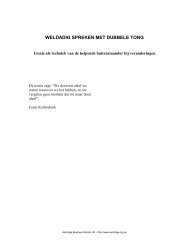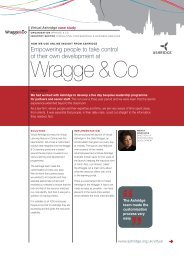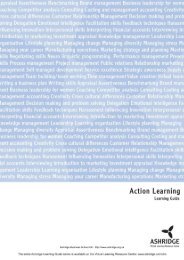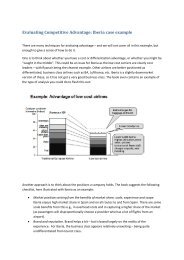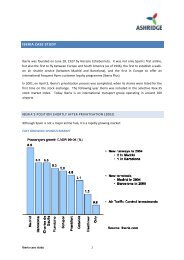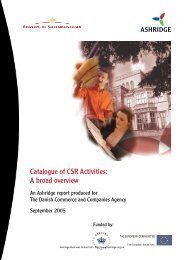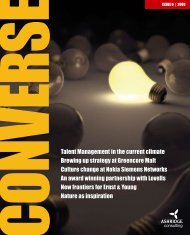“Dialogue – possible between leader and follower?” - Ashridge
“Dialogue – possible between leader and follower?” - Ashridge
“Dialogue – possible between leader and follower?” - Ashridge
You also want an ePaper? Increase the reach of your titles
YUMPU automatically turns print PDFs into web optimized ePapers that Google loves.
Uhl-Bien <strong>and</strong> her peers Dachler <strong>and</strong> Hosking (Dachler <strong>and</strong> Hosking, 1995;<br />
Hosking, 1988, 2007) have paved the way for further research in this area <strong>and</strong><br />
the infancy of theoretical development mean that there are unsurprisingly some<br />
clear areas which require further exploration. Ladkin (2010) points out <strong>and</strong><br />
develops a number of these, namely the importance of accounting more fully for<br />
the context <strong>and</strong> purpose in determining whether ‘<strong>leader</strong>ship’ results from the<br />
relationship; the critical role perception plays in the emergence of <strong>leader</strong>ship;<br />
<strong>and</strong> finally the distinction <strong>between</strong> hierarchical ‘headship’ <strong>and</strong> <strong>leader</strong>ship.<br />
In addition to these gaps, Uhl-Bien (2006) herself points to the need to further<br />
research in the processes of relational <strong>leader</strong>ship with one such process being<br />
dialogue. I suggest that Buber’s work might be regarded as complementary to<br />
the relational approach described by Uhl-Bien above because he approaches our<br />
world focused on the ‘<strong>between</strong>’ <strong>and</strong> holds the view that our reality is constant<br />
relations. If dialogue is understood in such terms then further research into<br />
dialogue might therefore serve to build the theoretical underpinnings of RLT.<br />
Journal papers focus overwhelmingly on the entity approach, unsurprisingly as<br />
the perspective upon which this is based has predominated views over the past<br />
few decades. From my underst<strong>and</strong>ing of the relational <strong>leader</strong>ship literature, <strong>and</strong><br />
from my practitioner experience in <strong>leader</strong>ship development, I can see that<br />
opinions on <strong>leader</strong>ship being about process, about perspective <strong>and</strong> construction,<br />
<strong>and</strong> occurring in <strong>between</strong> ‘<strong>leader</strong>’ <strong>and</strong> ‘<strong>follower</strong>’ do however seem to be<br />
gathering pace both in the academic literature <strong>and</strong> the classroom. Unfortunately<br />
though there is still a real dearth of empirical work to add richness to the<br />
debate.<br />
Cunliffe <strong>and</strong> Eriksen would appear to agree in their 2011 Leadership Quarterly<br />
article where they conceptualise <strong>leader</strong>ship as “embedded in the everyday<br />
relationally-responsive dialogical practices of <strong>leader</strong>s<strong>”</strong> <strong>and</strong> requiring <strong>leader</strong>s to<br />
engage in “relational dialogue<strong>”</strong>, (2011:1425). They seek to contribute empirical<br />
work to the area. Excited by reading this I wondered whether Buber’s ideas<br />
would feature in their work. Their inspiration however comes from Bakhtin.<br />
Nevertheless, given Bakhtin’s work is inspired by Buber it is unsurprising that<br />
16




